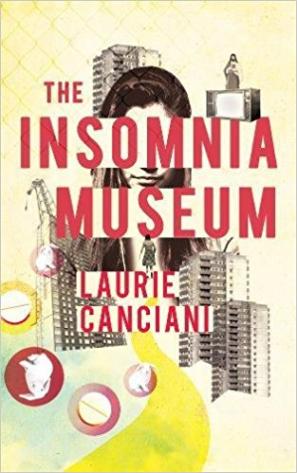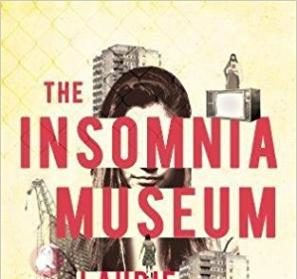Carolyn Percy reviews The Insomnia Museum by Laurie Canciani which follows 17-year-old Anna who is learning how to live in a new dark world.
Nothing moves on… no time because you taught the bird not to tell it… no reading because I don’t know how… I sleep… I eat… I live right next to you on the floor… I wait for you to come home and we fix things that don’t need fixing… for what? What does it mean? You don’t see it… I’m dead already.

“There’s no place like home,” Dorothy famously said. Well, for 17-year-old Anna, home is a filthy flat full of junk so extensive it’s superseded the architecture: the Insomnia Museum. For the past 12 years, she’s been helping her Dad construct it from the flotsam and jetsam he brings in. 12 years since she has left the flat, though the outside world still occasionally manages to intrude, light seeps in through the gaps in the boarded-up windows, music creeps up through the floors. But, one day, Dad falls asleep in his chair and doesn’t wake up, and so Anna must not only find somewhere to belong but learn how to live – both literally and figuratively – in a world that seems even stranger and certainly far more dangerous than the one she just left.
As you might have guessed, The Wizard of Oz holds great significance for our protagonist. Not only is it her favourite film, but it’s also her only window into an outside world of sorts (the image of Anna, alone in the flat, surrounded by junk, lit by the glow of the TV as she watches the tape over and over again is a poignant one). Reinforced by the numerous references made to it throughout – in titles of chapters for instance – and the fact that Dorothy acts as Anna’s imaginary friend/spirit guide. And with The Insomnia Museum, debut Welsh author Laurie Canciani has cleverly created a kind of Wizard of Oz in reverse: starting off in a strange place – a setting that should be familiar but distorted, this time not by magic and fantasy but by neglect and decay – before entering the grey, ‘Kansas’ mundanity of the real world – here, a deprived estate in thrall to a drug economy.
Anna is an interesting character, 17 but painfully childlike. Her father clearly loves her, but his drug addiction and hoarding habits mean he is unable to look after her properly, and his efforts to ‘protect’ her – isolating her, not teaching her basic skills such as how to tell the time or read – have damaged her, leaving her so that, when her father is gone, she is woefully unequipped to navigate the world outside. (Thankfully, she is found and taken in by Lucky and his son Trick, and thank god she is, as this would be a much, much darker book otherwise.)
This is reflected in the writing. Everything is filtered through Anna’s perspective, her knowledge – or lack thereof – colouring what we see (it takes a moment or two for the reader to work out what the otherwise charming and whimsical sounding “catching white rabbits” is actually a euphemism for, for example), resulting in a staccato writing style, Anna’s sentences often ending abruptly mid-thought, mirroring her confusion. Amongst the grit, like flakes of gold in a pan, there are moments of beauty, such as when Anna finds what turns out to be a lipstick: a “round black tube with a gold ring around the middle” with a “red crayon” inside.
The story builds slowly, reaching a conclusion that, whilst it might not be a stereotypically perfect happy ending, it’s certainly a much happier place than where we began. Overall, The Insomnia Museum is an interesting and original debut, proving that there is, indeed, no place like home, but that, sometimes, you have to go searching for it first, and that Canciani is one to watch.
The Insomnia Museum is out now from Head of Zeus.












